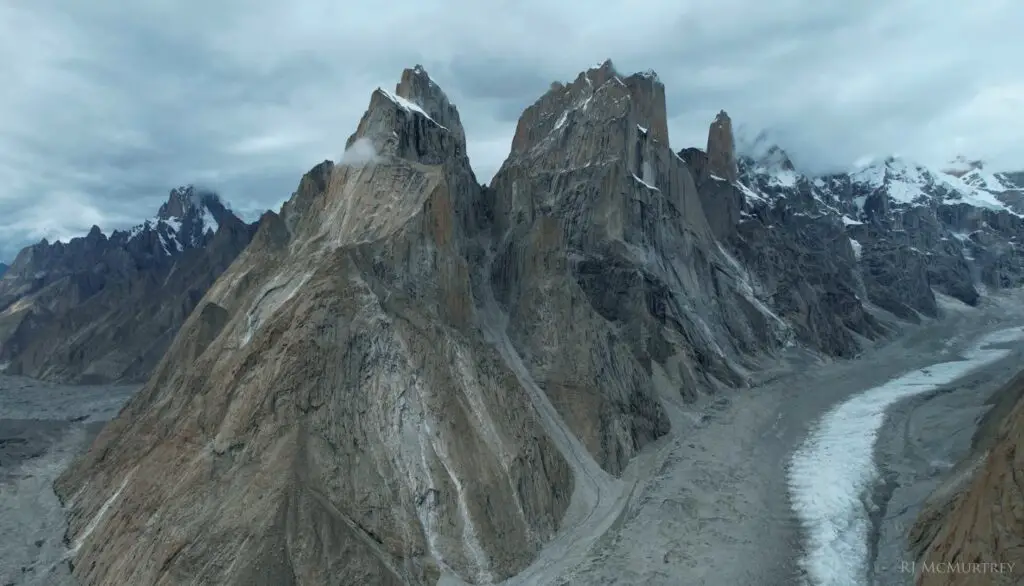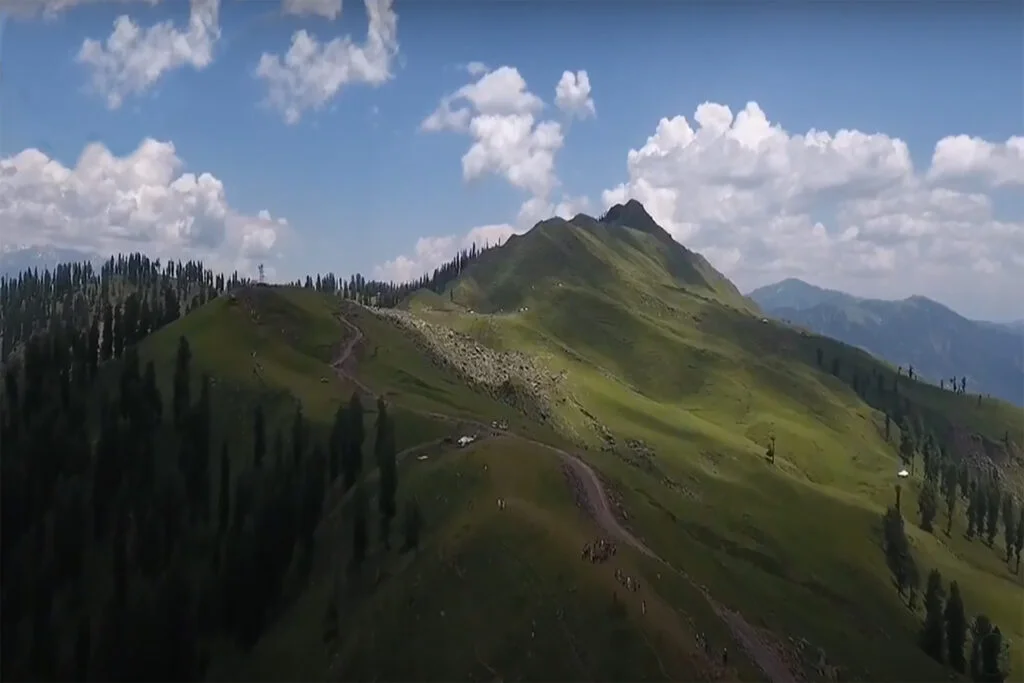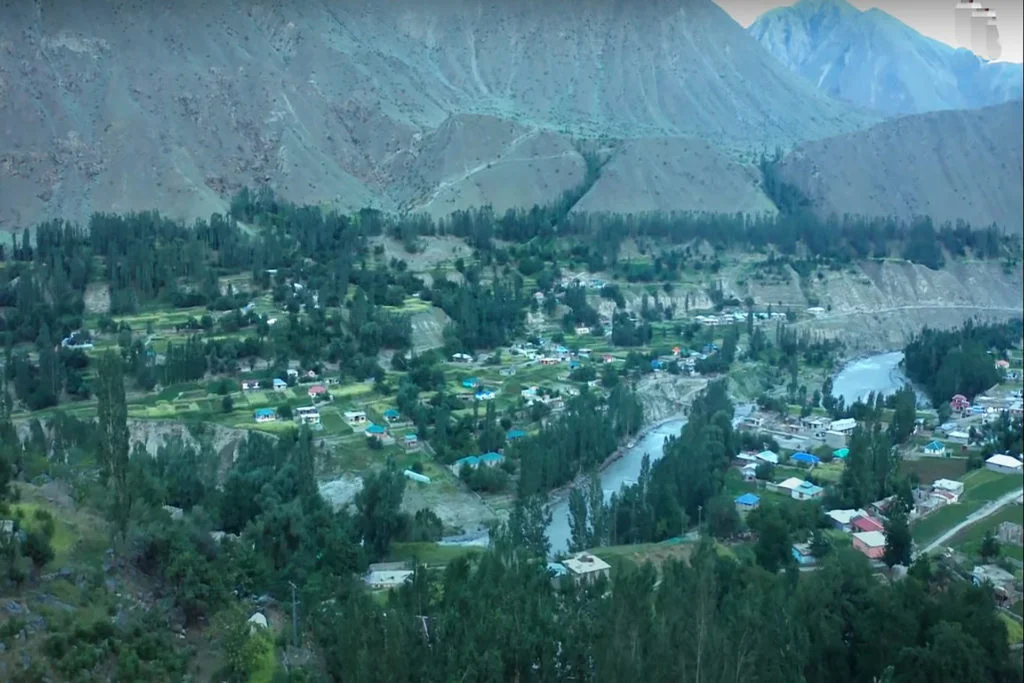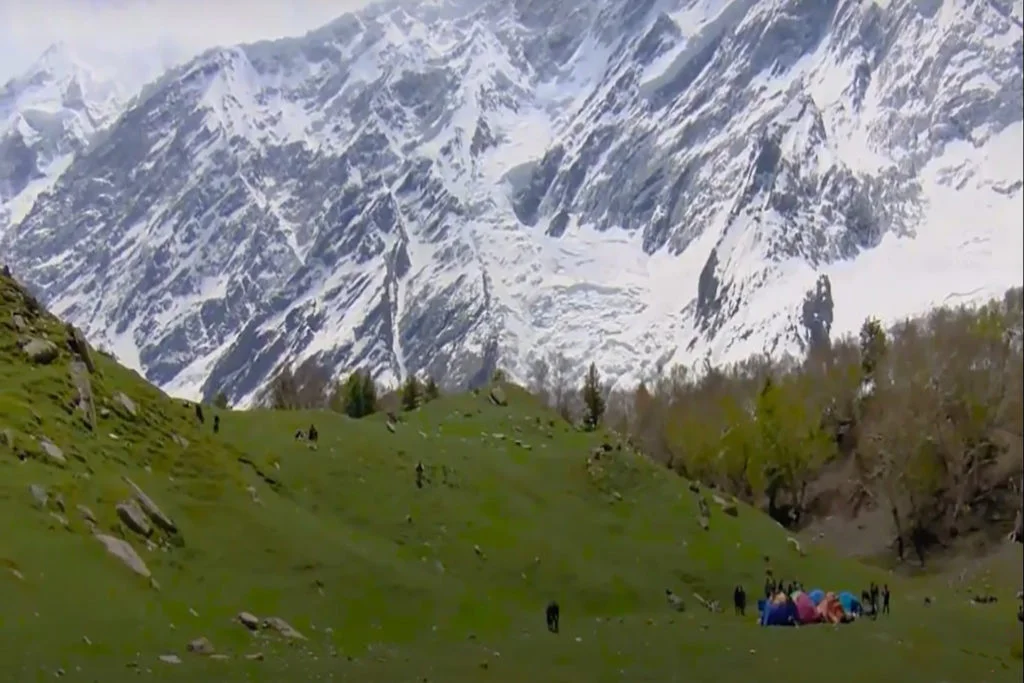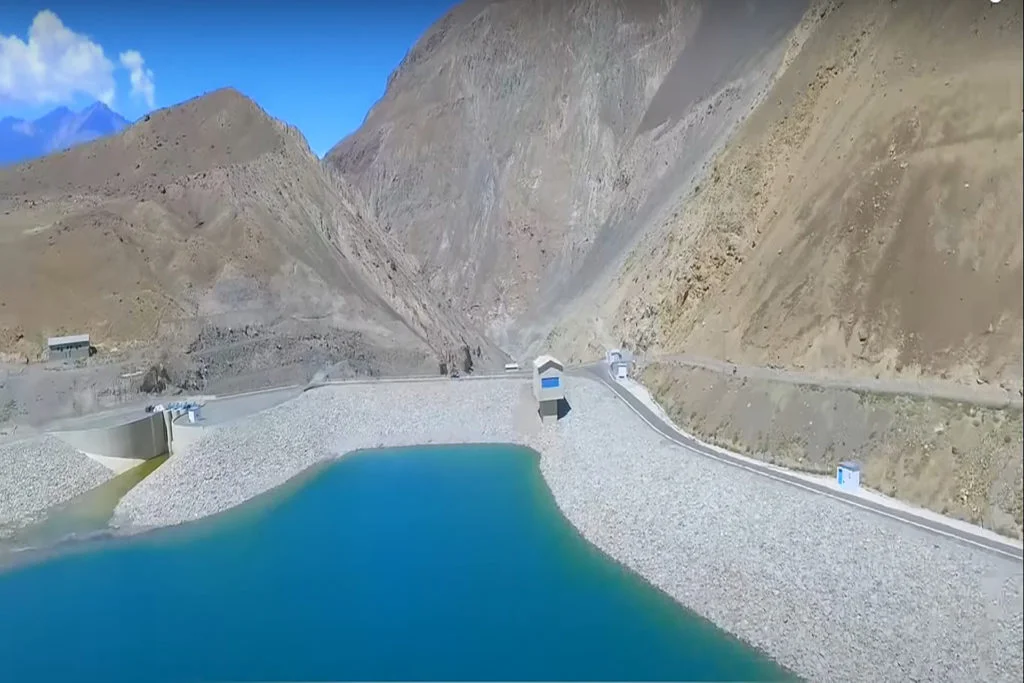The Trango Towers, located in the Gilgit-Baltistan region of northern Pakistan, are a family of rock towers that offer some of the most challenging and spectacular rock climbing in the world. These towers are located north of the Baltoro Glacier and are part of the Karakoram Mountains, which are home to some of the world’s tallest peaks and most impressive glaciers.
Location of Trango Towers, Pakistan
Trango Towers are located north of the Baltoro Glacier and are part of the Baltoro Muztagh, part of the Karakoram Mountains. The highest point in the group is the summit of Great Trango Tower at 6,286 m (20,623 ft), whose eastern face represents the greatest near-vertical drop in the world.
The Trango Towers have long been a destination for climbers from all over the world, and several expeditions visit the region each year to attempt to climb these difficult peaks. The towers offer some of the largest cliffs and most challenging rock climbing in the world, with routes that range from moderately difficult to almost impossible.
Best Time to Visit Trango Tower
The climbing season in the Trango Towers typically lasts from June to August, with climbers taking advantage of the longer days and relatively stable weather during this time. However, even during the climbing season, the weather in the region can be unpredictable, and climbers must be prepared for sudden storms and changes in temperature.
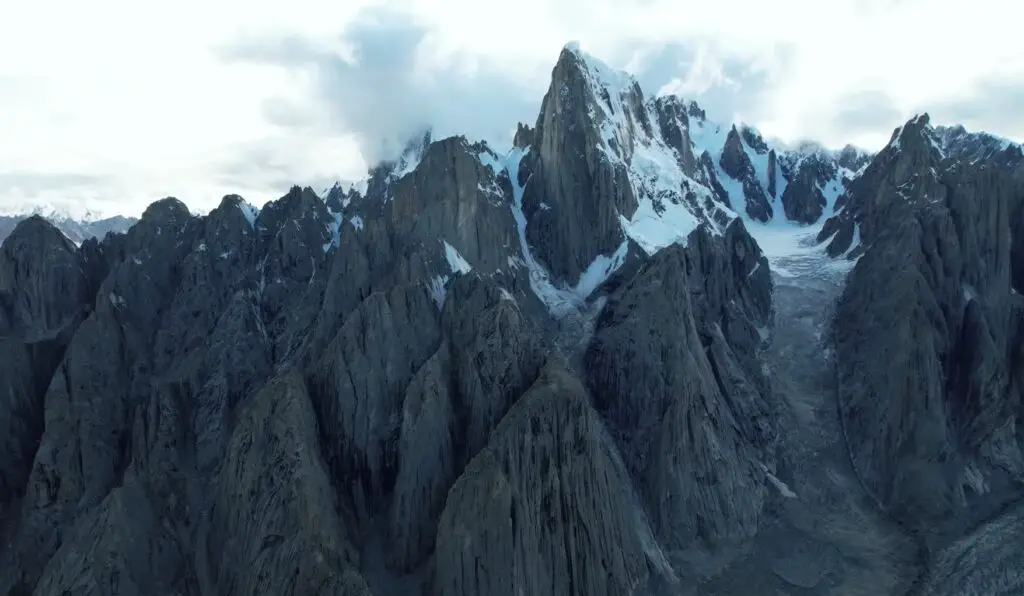
Elevation of Trango Towers in Pakistan
All Trango Towers lie on a ridge, roughly northwest-southeast, between Trango Glacier to the west and Dunge Glacier to the east. Great Trango itself is a large massif with four recognizable peaks: Main (6,286 m (20,623 ft)), South or Southwest (6,250 m (20,510 ft)), East (6,231 m (20,443 ft)) and West (6,223 m) (20,417 ft)). It is a complex combination of steep snow/ice gullies, steeper rock walls, and vertical to overhanging face walls, ending in a snowy ridge system.
Trango Tower Climbing & Routes
Climbing the Trango Towers in northern Pakistan is considered one of the ultimate challenges in the world of rock climbing. The towers’ jagged granite spires and sheer rock faces offer some of the largest cliffs and most challenging routes in the world.
Climbers typically start their journey by flying into Islamabad, the capital of Pakistan, and then taking a domestic flight to Skardu, a city in the Gilgit-Baltistan region. From Skardu, climbers take a jeep ride to the village of Askole, which serves as the starting point for treks into the surrounding mountains.
The trek to the Trango Towers base camp can take up to two weeks, depending on the route and weather conditions. Climbers carry all their own gear and supplies, including food, water, and camping equipment.
Once at the base camp, climbers must acclimate to the high altitude, which can take several days. They also must assess the weather conditions and determine the best time to attempt their climb.
Climbing the Trango Towers typically requires a team of experienced climbers, as well as specialized equipment, including ropes, harnesses, helmets, and other safety gear. Climbers must be prepared to navigate challenging terrain, including steep inclines, narrow ridges, and icy crevasses.
One of the most popular routes on the Trango Towers is the east face of the Great Trango Tower, which is considered one of the most difficult and technical climbs in the world. The route includes a combination of free climbing and aid climbing, with climbers relying on specialized gear to ascend the nearly vertical face.
The climb to the summit of Great Trango Tower can take several days, with climbers sleeping in hanging tents suspended from the rock face. The climb requires a high level of physical fitness, technical skill, and mental stamina.
Despite the challenges, climbers from all over the world are drawn to the Trango Towers for the unique and unforgettable experience of climbing these towering spires. However, it is important that climbers are experienced, well-prepared, and knowledgeable about the risks involved in high-altitude climbing. Climbers must also be mindful of the impact of their activities on the environment and take steps to minimize their impact on this delicate ecosystem.
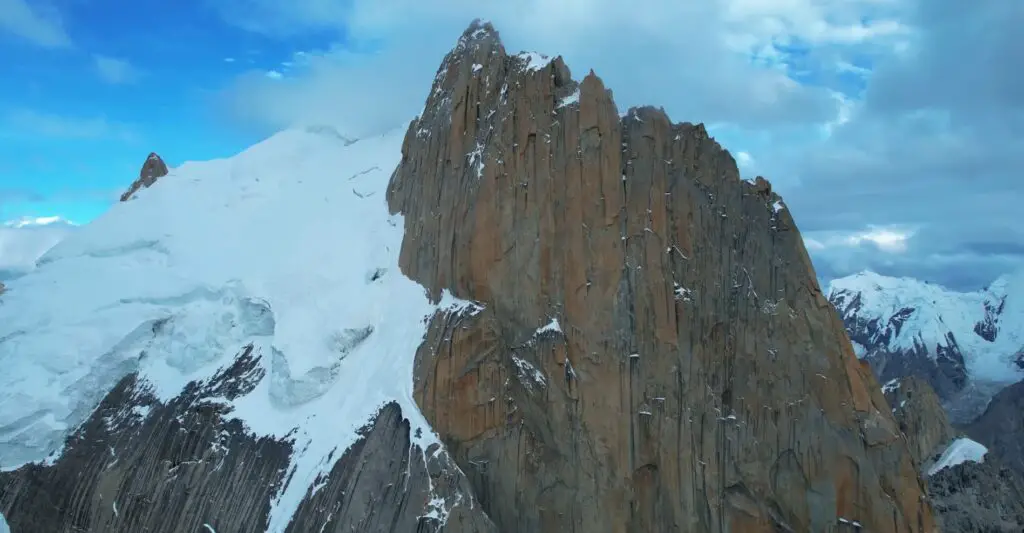
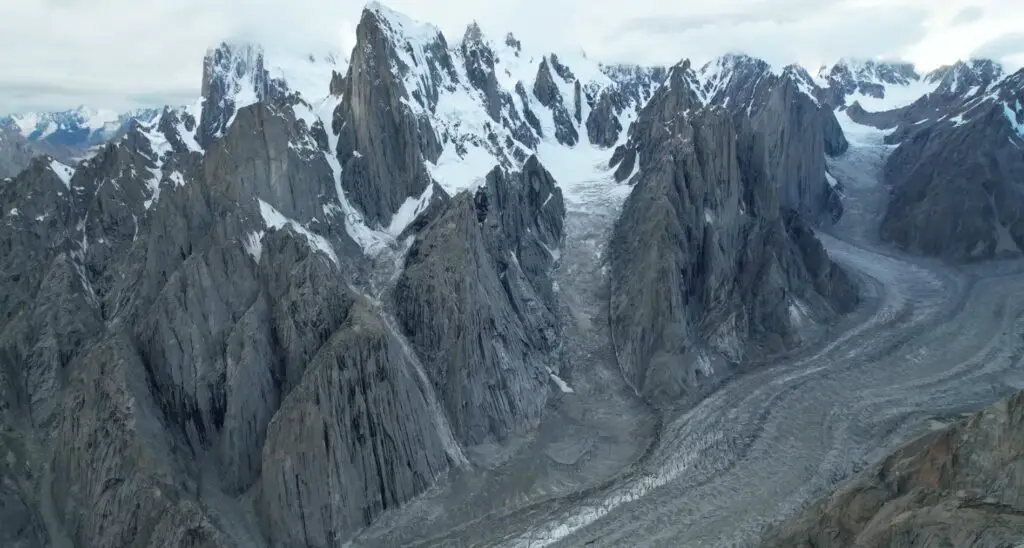
Tourist Attractions at Trango Towers Pakistan
In addition to the challenges of the climb itself, the Trango Towers also offer stunning views of the surrounding landscape. From the towers, climbers can see the Baltoro Glacier, the Gasherbrum peaks, and other nearby mountain ranges. The beauty and isolation of the area make it a unique and unforgettable destination for climbers and outdoor enthusiasts.
Despite its remote location and challenging terrain, the Trango Towers continue to attract climbers from all over the world. However, as with all extreme sports, there are risks involved, and climbers must be experienced, well-prepared, and knowledgeable about the dangers of high-altitude climbing.
Trango Towers Facts
Just northwest of Great Trango is Trango Tower (6,239 m (20,469 ft)), often called the “nameless tower”. It is a very large, pointed, rather symmetrical tower that rises 1,000 m (3,300 ft) from the ridge line. North of Trango Tower is a smaller rock tower known as “Trango Monk”. North of this formation, the ridge becomes less rocky and loses the large granite faces that distinguish the Trango Towers group and make them so attractive to climbers; but the peaks are getting higher.
These towers are not usually considered part of the Trango Towers group, although they share the name Trango. Trango II (6,237 m (20,463 ft)) lies northwest of Monk, and the highest peak on the ridge, Trango Ri (6,363 m (20,876 ft)), lies northwest of Trango II.
Just southeast of Great Trango (really part of its southeast ridge) is Trango Kazatelna (6,050 m (19,850 ft)), whose walls present similar climbing challenges to Great Trango itself. Further south is Trango Castle (5,753 m (18,875 ft)), the last major peak along the ridge before the Baltoro Glacier.
But with miles of vertical granite, the Great Trango Tower is a highly sought-after alpine prize. Great Trango, the tallest feature in the Trango Valley, located in the Baltoro Glacier region of northern Pakistan, features 4,396 vertical feet of granite, more than any other wall in the world.
These largest cliffs are a sub-range of the Karakoram Mountains centered at Baltoro Muztagh and to the north of the Baltoro Glacier. The entire line of Trango Towers rests on a ridge, approximately northwest-southeast, separating the Trango Glacier, which is to the west, and the Dinge Glacier, which lies to the east. Every year, this arduous challenge is accepted by various expeditions from all over the world, where they decide to visit the Karakoram Mountains and take pleasure in conquering this difficult granite with great effort.
Great Trango Towers
The Trango Towers consist of a group of jagged granite spires, including the Great Trango Tower, which is the highest point in the group at 6,286 meters (20,623 feet). Great Trango Tower’s eastern face is the largest nearly-vertical drop in the world, and it is a favorite challenge for experienced climbers.
Great Trango Tower is a massif itself and features four recognizable peaks which are as follows
1- First, the main peak lies at 6,286 m (20,623 ft)
2- Second, the south or southwest lies in elevation 6,250 m (20,510 ft)
3- The third lies in the east with a height of 6,231 m (20,443 ft)],
4- The fourth and last lies in the west with a height of 6,223 m (20,417 ft)
The Great Trango Tower has the unique feature of having the highest point of the tower family at 6,286 m (20,623 ft). Another notable feature is the eastern face of the Great Trango Tower, which is known for the largest near-vertical drop in the world. It is formed by a complex network of steep snow and ice ravines. This complex combination includes steeper rock faces and vertical to overhanging face faces ending in a snowy ridge structure.
Nameless Tower
Trango Tower, often called the Nameless Tower, rests exactly northwest of the Great Trango towers. The height of this tower is 6,239 m (20,469 ft). This spire is a prominent, canted, quietly well-balanced spire that bulges about 1,000 m (3,300 ft) from its crest line.
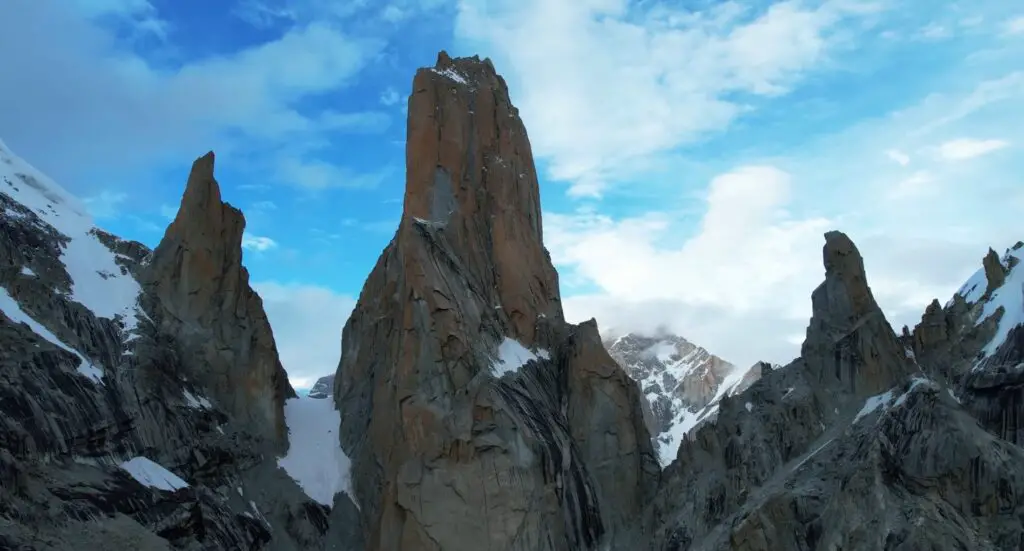
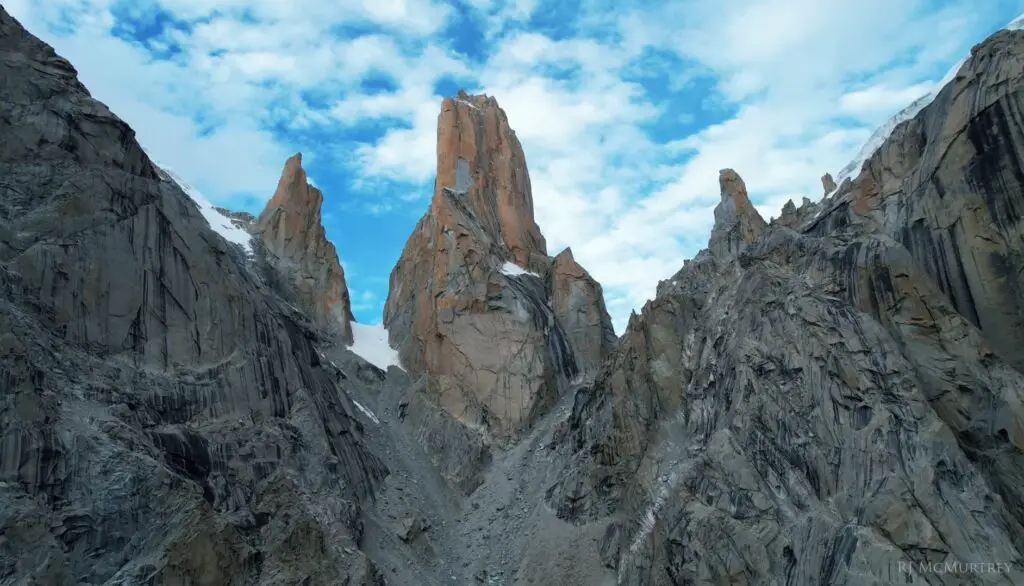
Tango Monk
Similarly, to the north of Trango Towers lies a smaller rock tower called Tango Monk. To the north of this exciting formation, although the peaks rise steadily, the summit of the hill reduces its rockiness and leaves the granite walls that make the Tango Towers most attractive to climbers, hikers, and visitors. These peaks are rarely considered part of the Trango towers group, even though they share the same name Trango.
Trango lies to the northwest of Trango II and has an elevation of 6,363 m (20,876 ft). While Trango II is the highest peak of the ridge, which rests to the north-west of Trango Monk and has a height of 6,237 m (20,463 ft)
Before the Baltoro Glacier lies the last huge peak next to the cliffs. This peak is called Trango Castle with a height of 5,753 m (18,875 ft), which is further south of the Trango pulpit. The Trango pulpit offers the same climbing challenges as the Great Trango itself. Trango pulpit is southeast of Velké Trango and has an elevation of 6,050 m (199,850 ft)
In recent years, there has also been a growing concern about the impact of climbing on the environment in the Trango Towers region. As climbers flock to the area, the delicate ecosystem is at risk of damage and disturbance. It is important that climbers take steps to minimize their impact on the environment, and that efforts are made to promote sustainable tourism in the area.
In conclusion, the Trango Towers are a climber’s paradise, offering some of the most challenging and spectacular rock climbing in the world. The beauty and isolation of the area, combined with the thrill of the climb, make it a unique and unforgettable destination for those seeking adventure and challenge. However, as with all extreme sports, climbers must be aware of the risks involved and take steps to protect both themselves and the environment.

